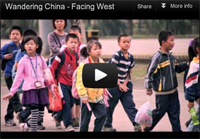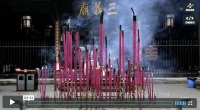Charging ahead with a knowledge economy mindset since the 1980s, Singapore today as a result has a relatively small digital divide despite widening income disparity. Media literacy, like most human resource checkboxes is critical to thrive in an island with its one truly viable resource – a well-trained, compliant, union action-free workforce.
Mainstream media unsurprisingly remains under the control of the one-party state. Its traditional media channels digitized as soon as the World Wide Web emerged and today Singapore leads international e-government rankings. It has thus far managed to largely keep public opinion under control – by either engaging alternative voices in public forums and online, or by enforcement of policy, making very public examples of those who cross – moving goalposts, a complex ruling party characteristic of rule. That satire could be punished, as the article reports is indicative.
Recent years have seen growing use of online platforms for public discourse enabled by Web 2.0. Some of described this as a great politicisation of a once ambivalent electorate that felt so threatened or swayed by dominant discourse in the past it was largely inert. Internet penetration was 75% back in June 2012. The island has also seen a growing free wireless network.
This space for public opinion online has been redefining the contours, peripheries and centre of gravity of public discourse in the island state known for its imagined, self-regulating out-of-boundary markers.
Much has changed this year. Depending on who you read, between two to five thousand attended physical public protests organized via social media and political blogs in the first half of 2013.
This had marked a change in course, of former ambivalence – to signs of fledgling activism.
The first strike in living memory caused by inter cultural incomprehension between Singaporean Chinese who identify more with Straits culture, and freshly imported mainland Chinese labour-intensive workers. There is no petition system there like the Chinese do.
Yet, its press rankings remain poor. Perhaps, the rankings disregard and do not give enough respect that Web 2.0 is beginning to democratize public opinion participation in the island state at a significant rate.
That it is an information society already savvy in digital communications is an important consideration. In the last election the ruling party garnered 60% of the popular vote to return more than 90% of the seats. Perhaps caused by such insurmountable odds, what was confined. The odd election fervor and coffee shop talk has transformed many into active citizenry. Could this be an anticipated side effect of its Intelligent Nation 2015 master plan?
In TV talk, Will this be a pilot episode that fizzles out as the dominant narrative attempts to pervade digital communication?
Or, can it build on this momentum demonstrative of an increasingly aware, participative and activist electorate to truly give it real world leverage. An emergence of a public sphere 2.0, in the works.
If this is the case, what does it mean for Chinese public diplomacy? Will its existing means continue to work or will it have it shift its efforts? Additionally, what can China learn from Singapore’s lessons on press control?
– – –
Singapore falls to record-low place in press freedom ranking –
By Shah Salimat
Source – Yahoo! News Singapore, published May 4, 2013
Singapore fell 14 places to a record 149th position in terms of press freedom, according to an annual report by non-governmental organisation Reporters Without Borders (RWB).
Coming ahead of World Press Freedom Day, which was observed Friday, the report showed this is the city-state’s worst performance since the index was established in 2002.
On the list, Singapore is wedged in between Russia and Iraq, with Myanmar just two places behind. The former junta-led country jumped up 18 spots in this year’s ranking.
Neighbouring Malaysia dropped 23 places to 145th over repeated censorship efforts and a crackdown on the Bersih 3.0 protest in April. Turkmenistan, North Korea and Eritrea stayed at the bottom three, while Finland stayed on top of the list followed by the Netherlands and Norway.
Please click here to read full article at Yahoo.
Read the rest of this entry »
Filed under: Beijing Consensus, Censorship, Charm Offensive, Chinese Model, Chinese overseas, Communications, Education, Government & Policy, Human Rights, Ideology, Influence, International Relations, Mapping Feelings, Media, Overseas Chinese, Politics, Public Diplomacy, Singapore, Social, Strategy, The Chinese Identity












The Sharing Circle